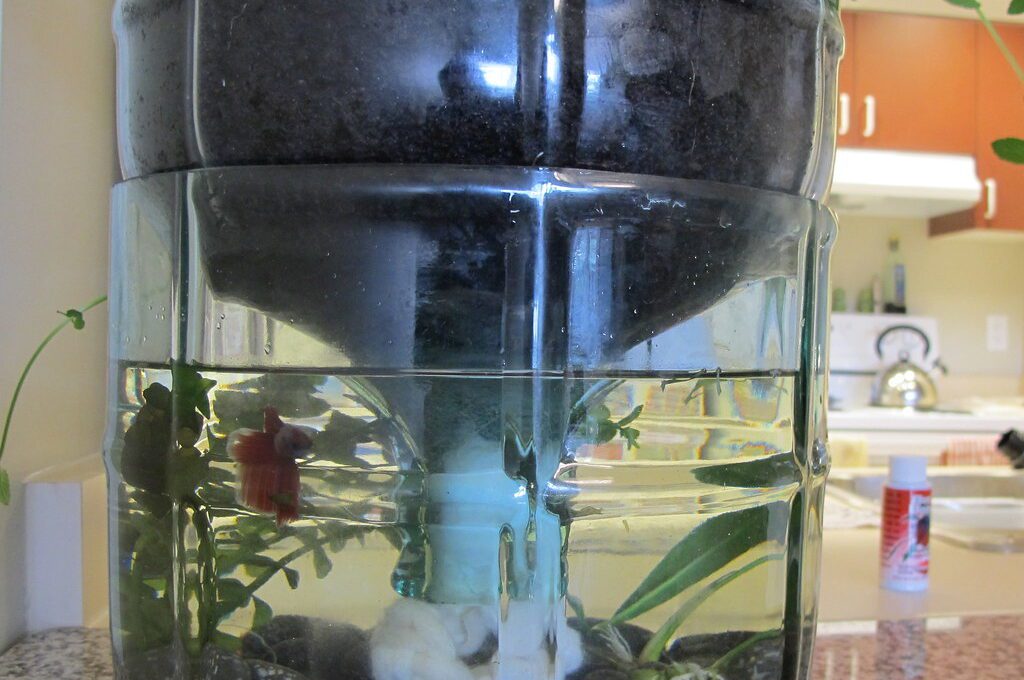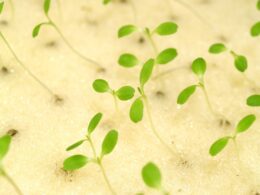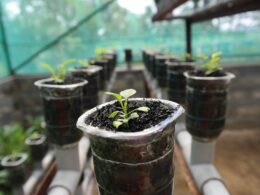If you’re interested in growing plants hydroponically, you might be wondering if a pump is necessary. The answer is: it depends on the type of hydroponic system you choose. Some systems require a pump to function properly, while others do not.
In this article, we’ll explore the basics of hydroponics and the different types of systems available to help you decide whether or not you need a pump for your hydroponic setup. Hydroponics is a method of growing plants without soil by using nutrient-rich water instead. This approach allows plants to grow faster and with less water than traditional soil-based methods.
However, hydroponic systems require careful monitoring of pH levels, nutrient concentrations, and water levels to ensure the ideal growing environment for your plants. With so many different types of hydroponic systems available, it can be overwhelming to choose the right one for your needs.
In the next section, we’ll discuss the most common types of hydroponic systems and whether or not they require a pump to function.
Understanding the Basics of Hydroponics
By grasping the fundamental principles of hydroponics, you can successfully cultivate plants using water and nutrients alone. Hydroponics is a method of growing plants without soil, where the roots are submerged in a nutrient-rich solution.
The plants receive all the necessary nutrients and water directly, allowing them to grow faster and healthier than traditional soil-based methods. One of the most important aspects of hydroponics is choosing the right hydroponic medium.
There are several options available, including rockwool, perlite, and coconut coir. Each medium has its own advantages and disadvantages, so it’s important to choose the one that best suits your needs.
Additionally, pH level management is crucial in hydroponics. The pH level of the nutrient solution should be between 5.5 and 6.5 for most plants to thrive. Regular monitoring and adjustment of the pH level is necessary to ensure optimal plant growth.
In hydroponics, a pump is not always necessary, but it can be helpful in certain situations. For example, if you’re using a deep water culture system, a pump is necessary to circulate the nutrient solution and provide oxygen to the roots. However, if you’re using a drip system or a nutrient film technique, a pump may not be necessary.
Ultimately, the decision to use a pump depends on the specific hydroponic setup and the needs of the plants being grown.
Deep Water Culture
If you’re interested in learning about deep water culture, here are some key points to keep in mind:
- This hydroponic system involves suspending plants in a nutrient-rich solution, with the help of a pump.
- Using a pump can help improve oxygenation, which can lead to healthier plant growth.
- Some crops that do well in deep water culture include lettuce, basil, and spinach.
Make sure each complete sentence is on its own line, with a double new line after. Also, use contractions.
How it Works
Take a look at how hydroponics functions and discover how you can cultivate plants without soil. With pumpless hydroponics and alternative methods, you don’t need a pump to grow your plants. Instead, you can use a wick system or a nutrient film technique.
In a wick system, the plants are placed in a container with a growing medium, such as coconut coir or perlite. A wick made of cotton or other absorbent material is inserted into the growing medium and extends into a reservoir of nutrient solution. The wick draws the nutrient solution up to the roots of the plants, providing them with the necessary nutrients.
Meanwhile, in a nutrient film technique, a thin film of nutrient solution continuously flows over the roots of the plants, providing them with the necessary nutrients and oxygen.
By utilizing these pumpless hydroponic methods, you can grow your plants with ease.
Benefits of Using a Pump
Using a pump in hydroponics can offer numerous advantages that go beyond just cultivating plants. Here are some of the benefits of using a pump in your hydroponic system:
-
Consistent water and nutrient distribution: A pump ensures that water and nutrients are evenly distributed throughout the hydroponic setup. This leads to consistent plant growth and higher yields.
-
Higher oxygen levels: A pump can also increase the oxygen levels in the water, which is essential for healthy root growth. This can lead to faster growth and healthier plants.
-
Less manual labor: With a pump, you don’t have to manually water your plants or mix nutrients, which can save you time and effort.
-
Better control over the environment: A pump can also help you control the temperature and humidity levels in your hydroponic system, which can lead to better plant growth and fewer problems with pests and disease.
While using a pump in hydroponics has many advantages, it’s important to weigh the pros and cons before deciding if it’s the right choice for you. There are alternatives to using a pump, such as a passive hydroponic system, that may be more suitable for certain situations. Ultimately, the decision to use a pump in hydroponics will depend on your individual needs and preferences.
Examples of Crops that Thrive in this System
Hydroponic crops can grow without soil, but they need a nutrient-rich solution to thrive. Hydroponic farming techniques rely on water pumps to circulate the nutrient solution to the plants’ roots. Without a pump, the water and nutrients would not reach the plants, and they wouldn’t be able to grow.
The crops that flourish in this system are diverse and include tomatoes, lettuce, herbs, and strawberries. Hydroponic farming allows plants to grow faster and produce larger yields than traditional farming methods. By controlling the nutrient levels and water supply, farmers can ensure that their crops are healthy and free from pesticides and other harmful chemicals.
With the right equipment and knowledge, anyone can grow hydroponic crops and enjoy fresh, flavorful produce all year round.
Is It Easier to Grow Hydroponics with a Pump?
When it comes to hydroponics, using a pump can make growing certain crops a breeze. The easiest hydroponics crops to grow can benefit from the continuous flow of nutrient-rich water that a pump provides. With this system, plants receive consistent nourishment, leading to faster growth and higher yields. Pump-assisted hydroponics simplifies the cultivation process, making it a popular choice among growers.
Nutrient Film Technique
To nourish your plants efficiently, Nutrient Film Technique is a popular hydroponic method that involves a continuous flow of nutrient-rich water. This system is best for crops with shallow root systems, such as lettuce and herbs.
The technique is simple: a shallow stream of nutrient solution is continuously circulated over the plants’ roots, allowing them to absorb the nutrients they need to grow. One of the advantages of this technique is that it uses less water than other hydroponic systems. However, it requires more maintenance, as any blockages in the system can cause the nutrient-rich water to stop flowing.
It’s important to regularly check the system for blockages and to keep the nutrient levels balanced to ensure your plants continue to grow properly. Overall, Nutrient Film Technique is a great way to grow hydroponically without the need for a pump. It’s a low-maintenance system that allows you to efficiently nourish your plants and grow a variety of crops.
With proper care and attention, your plants will thrive and produce a bountiful harvest.
Wick and Drip Irrigation
You’ll love how simple and efficient wick and drip irrigation can be for nourishing your plants in a hydroponic system. Here are three reasons why:
-
With wick irrigation, all you need is a wick made of absorbent material, like cotton, that’s placed in a nutrient solution and then inserted into the grow medium. The wick will then draw the solution up to the plants’ roots. It’s a passive system that doesn’t require electricity or pumps, making it easy to set up and maintain.
-
Drip systems are also easy to set up and maintain. In this system, a pump delivers nutrient solution through tubing to drip emitters that release drops of solution directly to the plants’ roots. This method ensures that the plants receive a consistent supply of nutrients and water. It’s an efficient system that minimizes waste and keeps plants healthy.
-
Both wick and drip irrigation are excellent for growing small to medium-sized plants, making them ideal for home gardeners. They’re also cost-effective and require less water than traditional soil gardening.
With these simple systems, you can grow healthy plants and enjoy fresh produce year-round. Incorporating wick irrigation or a drip system into your hydroponic setup is an easy and efficient way to nourish your plants. Whether you’re a beginner or an experienced gardener, these systems offer a simple and effective way to grow healthy plants in a hydroponic environment. So why not give them a try and see the results for yourself?
Choosing the Right Hydroponic System for Your Needs
When it comes to choosing the right hydroponic system for your needs, there are several factors to consider. You’ll want to think about things like space limitations, budget, and the types of plants you want to grow.
Additionally, if you’re looking to grow hydroponically without a pump, there are some tips you should keep in mind to ensure successful growth.
Factors to Consider
It’s important to take into account various factors when considering the best way to cultivate your hydroponic plants. One of the most important factors is the type of hydroponic setup you choose. Different plants have different requirements and some hydroponic systems may work better for certain plants than others. For example, if you’re growing plants that require a lot of oxygen, you may want to consider an aeroponic system that provides more oxygen to the roots. On the other hand, if you’re growing plants that require a lot of water, a deep water culture system may be a better option.
Another factor to consider is the size of your hydroponic setup. If you’re just starting out and only planning on growing a few plants, a small setup may be all you need. However, if you’re looking to grow a larger number of plants or want to experiment with different types of plants, a larger setup may be necessary. It’s also important to consider the amount of space you have available, as larger setups will require more room.
By taking these factors into account, you can choose the best hydroponic system for your needs and ensure that your plants grow healthy and strong.
Tips for Successful Hydroponic Growth without a Pump
Achieving a thriving hydroponic garden is possible even without using a pump, and with these tips, you can elevate your plant growth to new heights.
Here are some DIY alternatives and low-cost solutions for a successful hydroponic setup:
-
Use an air stone or bubbler to provide oxygen to the roots of your plants. This will encourage growth and prevent root rot.
-
Create a gravity-fed system by placing your reservoir at a higher level than your plants. This will allow the nutrient solution to flow down to your plants without the need for a pump.
-
Experiment with different growing mediums, such as coco coir, perlite, or vermiculite. These alternatives can provide similar results to traditional hydroponic systems without the need for a pump.
-
Consider using a wick system, where a wick is used to draw nutrient solution up to your plants. This method is low-cost and simple to set up.
By using these DIY alternatives and low-cost solutions, you can successfully grow hydroponically without a pump. With a little experimentation and research, you can find the best method for your plants and setup.
Frequently Asked Questions
How much electricity does a hydroponic pump consume?
When it comes to hydroponics, a pump is often used to circulate nutrient-rich water to the plants. However, it’s important to consider the energy consumption of the pump you choose. By reducing energy consumption, you can not only save money on your electricity bill, but also decrease your carbon footprint.
One way to do this is by choosing the right pump size for your hydroponic system. A pump that is too small will not provide enough circulation, while a pump that is too large will waste energy. Be sure to do your research and consult with experts to find the best pump for your specific needs.
By taking these steps, you can grow your hydroponic plants while minimizing your impact on the environment.
Can I use a submersible pump for my hydroponic system?
Looking for submersible pump alternatives for your hydroponic system? Look no further! Using a submersible pump for hydroponics has many benefits. Not only do these pumps consume less electricity, but they also operate quietly and efficiently. They’re also easy to install and maintain, making them a great option for beginners.
Plus, they don’t take up much space, which is perfect for those working with limited room. With all of these benefits, it’s no wonder why submersible pumps are becoming the go-to choice for hydroponic enthusiasts. So, if you’re looking for a reliable and efficient pump for your hydroponic system, consider investing in a submersible pump today!
What is the lifespan of a hydroponic pump?
Maintaining your hydroponic pump is essential for the longevity of your system. It’s recommended that you regularly clean your pump to prevent debris build-up and ensure optimal performance.
Troubleshooting common pump issues such as a clogged impeller or airlock can also help extend the lifespan of your pump. Keep in mind that the lifespan of a hydroponic pump can vary depending on the quality of the pump and how well it’s maintained.
It’s important to invest in a high-quality pump and follow proper maintenance procedures to ensure your hydroponic system runs smoothly. By taking these steps, you can avoid potential pump failures and ensure the safety of your plants.
How often should I clean my hydroponic pump?
To maintain your hydroponic pump and prevent contamination, regular pump maintenance is crucial. Cleaning your hydroponic pump should be done every two to four weeks to avoid buildup of debris and algae.
To start, disconnect the pump from the power source and remove it from the system. Disassemble the pump and soak the parts in a vinegar solution for 30 minutes. After soaking, rinse the parts thoroughly with clean water and reassemble the pump.
Regular pump maintenance not only helps prevent contamination but also extends the lifespan of your pump. Remember, keeping your hydroponic system clean is key to growing healthy plants!
Can I control the flow rate of my hydroponic pump?
Adjusting the flow rate of your hydroponic pump is crucial for maintaining a healthy and thriving hydroponic system. Fortunately, there are various methods to control the flow rate without relying on a pump. You can use gravity-fed systems or air-powered pumps to move water and nutrients through your hydroponic setup. These alternatives are less expensive and require less maintenance than traditional pumps.
However, if you decide to use a pump, you can adjust the flow rate to meet the needs of your plants. By doing so, you can ensure that your crops receive the right amount of water and nutrients, promoting their growth and health.
Conclusion
So, do you need a pump to grow hydroponics? The answer is not necessarily.
While some hydroponic systems require a pump to circulate the nutrient solution, there are other systems that don’t require a pump at all.
If you’re just starting out with hydroponics, it’s important to understand the different types of systems available and choose the one that suits your needs.
Whether you opt for a deep water culture or a nutrient film technique, make sure you do your research and follow the instructions carefully.
With the right system and a little bit of know-how, you can grow a wide variety of plants hydroponically without the need for a pump.









